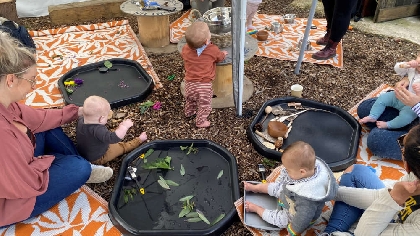
You might have gathered by now that a couple of blokes our age have our musical tastes rooted in a particular time and place, writes co-host Michael Taylor.
But much as our senses were filled in smoky clubs, concerts, and by listening to records on the counters of a record shop, they were also stimulated by the media.
Both commercial radio and the BBC played a part. There were great music shows on the TV, like The Tube, Top of the Pops, and various ‘yoof’ TV shows where music played a big part. But it was also fuelled by a thriving print media.
When I was growing up there were four weekly newspapers covering new music, nicknamed the ‘inkies’ because of the newsprint that it left on your fingers.
They were Melody Maker, Sounds, Record Mirror, and the NME, or to give it its full name, New Musical Express. Although I occasionally dipped into all four, I was very much an NME kid.
For me it had three genuinely golden eras, 1981, 1984 and 1989. The first was all about post-punk and Joy Division, the second after the backside had fallen out of my world when The Jam split up: lots of focus on The Smiths, The Pogues and Billy Bragg, mixing pop and politics.
The third act was telling the story of how pop met dance music. It was electric stuff that featured the early work of great writers who I still enjoy today, like Stuart Maconie and James Brown, who went on to found lads’ magazine Loaded.
In the ‘80s I was also a habitual reader of an archly trendy monthly glossy magazine called The Face. I simply can’t overstate how influenced I was by The Face, it shaped not just what I consumed, but how I approached journalism, ideas, politics, design, aesthetics, fashion, music.
It was important to know what was behind the music we were listening to, and pseudo-intellectual bands like Scritti Politti, Lloyd Cole and Prefab Sprout would drop in all kinds of references to poets, philosophers and writers that I would then find out about.
But it was also important to understand what the bands looked like, the poses they’d strike and what that said about them as people. Sometimes in a studio, but also how they were captured on a live stage. It’s fair to say that the photography played a massive part of the story of the ‘80s and ‘90s and right there at the heart of it was a Manchester-born photographer, Kevin Cummins.
Neil has interviewed Kevin in the latest of his series for the Manchester clothing brand Good Measure. Asked what his most powerful shot is, he told Neil: “Probably the portrait of Ian Curtis wearing his overcoat while having a cigarette on a cold late afternoon on January 6, 1979.”
But his great skill was in capturing a mood, an era. You can’t think of the Stone Roses without seeing them covered in paint, or Shaun Ryder climbing on a giant letter E on the roof of a Hollywood hotel.
They were both dramatic cover shots, produced through the lens of this skilled artist.
You can listen to Michael Taylor and Neil Summers on Music Therapy on Tameside Radio 103.6FM on Sunday evenings from 9pm to 11pm. Click here to subscribe and catch up on previous shows.
Read more from the Tameside Reporter
Click here for more of the latest news
Click here to read the latest edition of the paper online
Click here to find out where you can pick up a copy of the paper


 Denton man, 40, jailed for 24 years for being part of biggest gun-running plot ever seen in UK
Denton man, 40, jailed for 24 years for being part of biggest gun-running plot ever seen in UK
 People of all ages invited to get stuck in at Dukinfield allotment
People of all ages invited to get stuck in at Dukinfield allotment
 Man, 41, arrested after cannabis farm in loft causes Denton house fire
Man, 41, arrested after cannabis farm in loft causes Denton house fire



